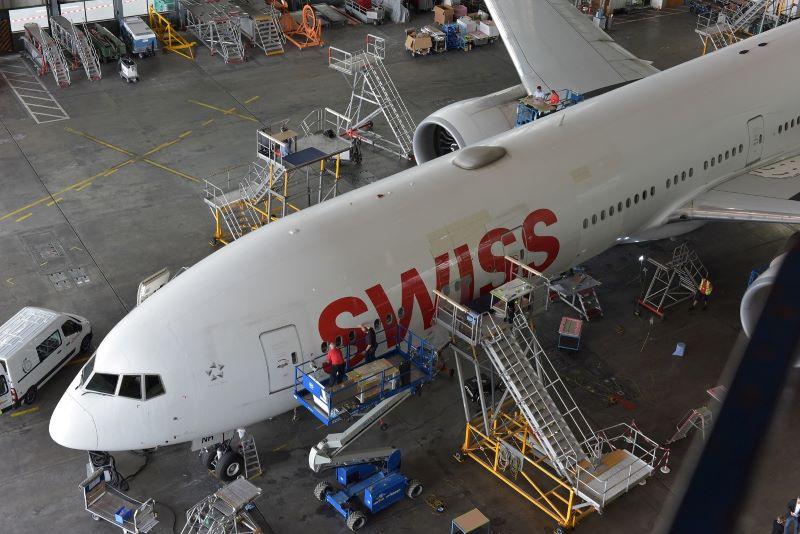
Swiss International Air Lines has become the first carrier to deploy drag-reducing riblet technology on passenger services, with the Oct. 14 Zurich-Miami flight of a Boeing 777-300ER with AeroShark film applied to its fuselage and engine nacelles.
Developed by Lufthansa Technik and BASF, the AeroShark film is already in use on launch customer Lufthansa Cargo’s 777F freighter fleet. On Swiss’ 777-300ERs, the transparent, adhesive plastic film covers a greater area, 950 m² (10,230 ft.²) compared with 800 m² on the 777F.
Riblets are microscopic grooves aligned with the airflow over the airframe. The millions of 50-micrometer grooves minimize contact between the turbulent flow and the surface, reducing skin-friction drag. The film improves fuel efficiency by 1.1% on the 777-300ER and reduces emissions.
Swiss plans to apply AeroShark to all 12 of its 777s. More than 2,500 individual adhesive panels must be trimmed and applied to cover the fuselage and nacelles of the aircraft. The film is designed to withstand temperature extremes, ultraviolet radiation, dirt and de-iceing fluid and be removable for repairs.
The Lufthansa Group airline supported Lufthansa Technik and BASF in development of the AeroShark film for the 777. In 2021, the aerodynamic performance of the wing was monitored on a scheduled Zurich-San Francisco flight and the data collected was used to generate high-fidelity airflow models being employed to develop the riblet film for additional application to the 777 wing to increase fuel savings.

